
Location
The path leading to St Mary's passes between the old rectory and the great seventeenth century hall and its glorious gardens, the inspiration for Tennyson's 'Come into the Garden Maud'. The first thing you see as you enter the churchyard is the rock-faced west tower, then the similarly rock-faced nave and chancel with Decorated style windows. All you see dates from S S Teulon's very thorough rebuilding of 1854-5. You enter the building not expecting much, and in fact all that remains internally of the medieval church is the tower arch. However, be prepared to be surprised, for what Teulon did reuse and what makes this church so very special. are the monuments to sucessive lord's of the Manor, the de Harringtons, Copledikes and Amcotts.
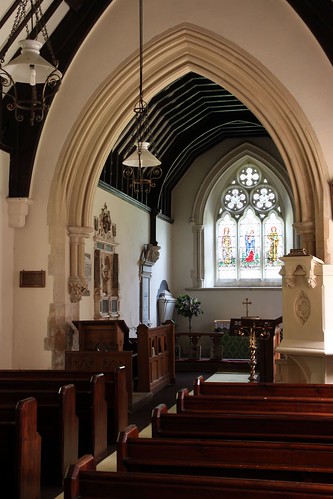
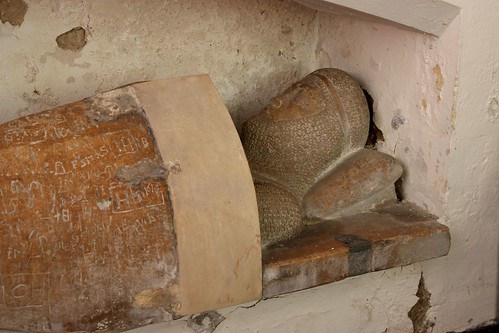
Taking them chronologically, the earliest is a cross-legged military effigy of the early fourteenth century, said to be John de Harrington. Carved from honey-coloured stone, his shield is covered with graffiti.

Then a brass to Margaret Copledike c.1480, she portrayed in widow's weeds with her hands raised in adoration. This over-polished brass formed part of a monument that also commemorated her husband John, they were both similarly posed below a lost image in brass. Apparently the matrix remains under the carpet. She needs putting back. The next in date is a brass commemorating John Copledyke who died in 1552, part of a rather battered tomb chest in the tower now used as a surface for storing flower vases and ecclesiastical detritis.

His two sons Sir John died 1585 and Francis, died 1599 are commemorated by monuments in the chancel. Sir John and his wife as shown kneeling in brass against the back of a reused late medieval canopied tomb chest.
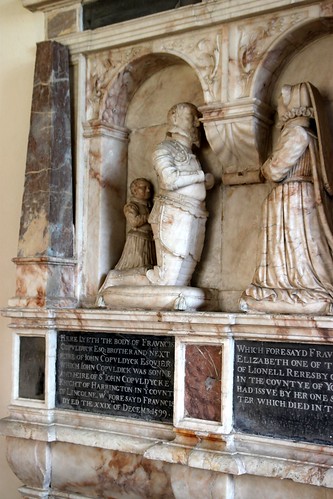
Francis and his wife Elizabeth, opposite, are imortalised in a classical alabaster tablet with kneeling effigies. The last of the Copledike line, Thomas Copledike who died in 1658, has a pedimented marble tablet with an inscription extolling his virtue - 'the last and best' of 'ancient stock'.
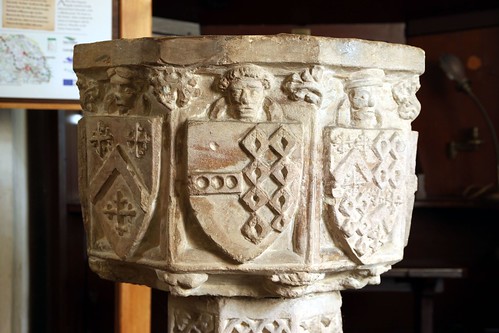
The Copledike's patronage of the church is shown by the Perp. font, which is decorated with their arms and those of their associates and relatives, each shield hung around the neck of a little figure.

The Amcotts monuments continue this fascinating collection. Vincent Amcotts who purchased the estate and hall after the death of Thomas Copledike, has a fine heraldic ledger slab in the chancel and there are further monuments to his descendants in the chancel and tower.
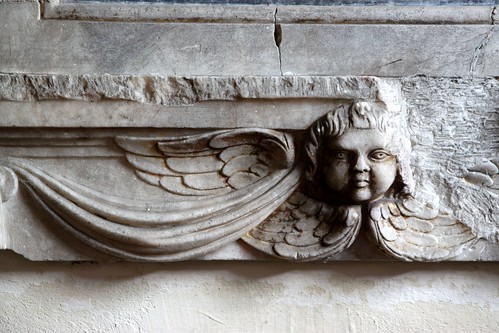
Access: The church is kept open as are all the churches in the South Ormsby group of parishes. There is limited parking on the roadside opposite the church gate.
If you want to see some more photos of Harrington look in my Flickr set

No comments:
Post a Comment